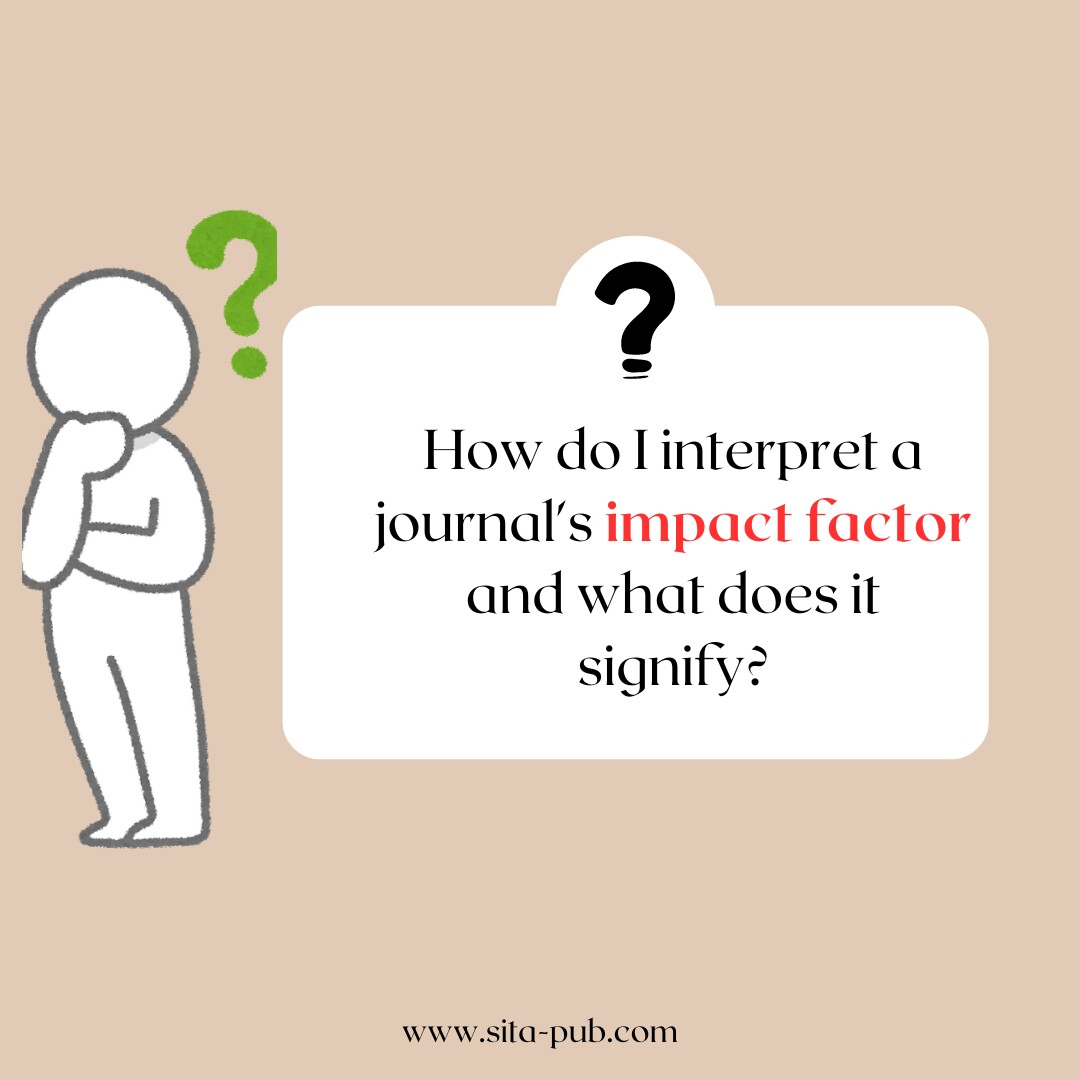How do I interpret a journal's impact factor and what does it signify?


The journal impact factor (JIF) is a widely used metric in the academic community to assess the influence and prestige of scholarly journals. Calculated annually by Clarivate Analytics, the impact factor measures the average number of citations received by articles published in a specific journal over two years.
The impact factor is expressed as a numerical value, for example, 3.5. It means that, on average, articles published in that journal over the past two years have been cited 3.5 times. Generally, a higher impact factor suggests that the journal is more influential and prestigious within its academic field.
We should consider the context when evaluating a journal's impact factor. Impact factors can vary significantly across different academic disciplines, as research in the sciences often generates more citations than research in the humanities or social sciences. Therefore, it is essential to compare a journal's impact factor within the specific subject area it represents.

To better understand the significance of a journal's impact factor, the following key factors should be considered:
Metric | Explanation |
|---|---|
Quartile Ranking | Journals are ranked within their subject categories and divided into quartiles (Q1, Q2, Q3, Q4) based on their impact factor. A Q1 journal has an impact factor that places it in the top 25% of journals in that field. |
Percentile Rank | The percentile rank indicates the percentage of journals in the same subject category that have a lower impact factor than the one in question. A journal with a 90th percentile rank is in the top 10% of journals in its field. |
Discipline-Specific Benchmarks | Different academic disciplines have varying norms and expectations for impact factors. What may be considered a high impact factor in one field may be relatively low in another. |
While the impact factor is widely used, it is essential to recognize its
The impact factor of a journal can be skewed by a few highly cited articles, which may not accurately reflect the overall quality of the content.
The impact factor fails to account for the differences in citation patterns between research fields and subfields, which can lead to biases.
The two-year window used to calculate the impact factor may be insufficient to accurately capture the long-term impact of some publications.
Encouraging authors to cite other articles from the same journal have the potential to manipulate the impact factor.
If you are looking to publish your article but don't know where to start, SITA can help guide you through the entire publication process. Experienced professionals at SITA can help identify suitable journals, prepare your manuscript according to the specific guidelines, and navigate the submission and review process. With their expertise and support, you can increase your chances of getting your work published in a reputable academic outlet. By leveraging SITA's services, you can focus on your research and writing while the publication-related tasks are handled efficiently.
What services do we offer?
If you have any questions, inquiries, or would like to learn more about our services, please don't hesitate to reach out to us. Our dedicated team is ready to assist you.